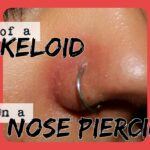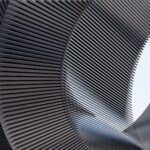Beginners Guides
What You Should Know About Piercings and Keloids

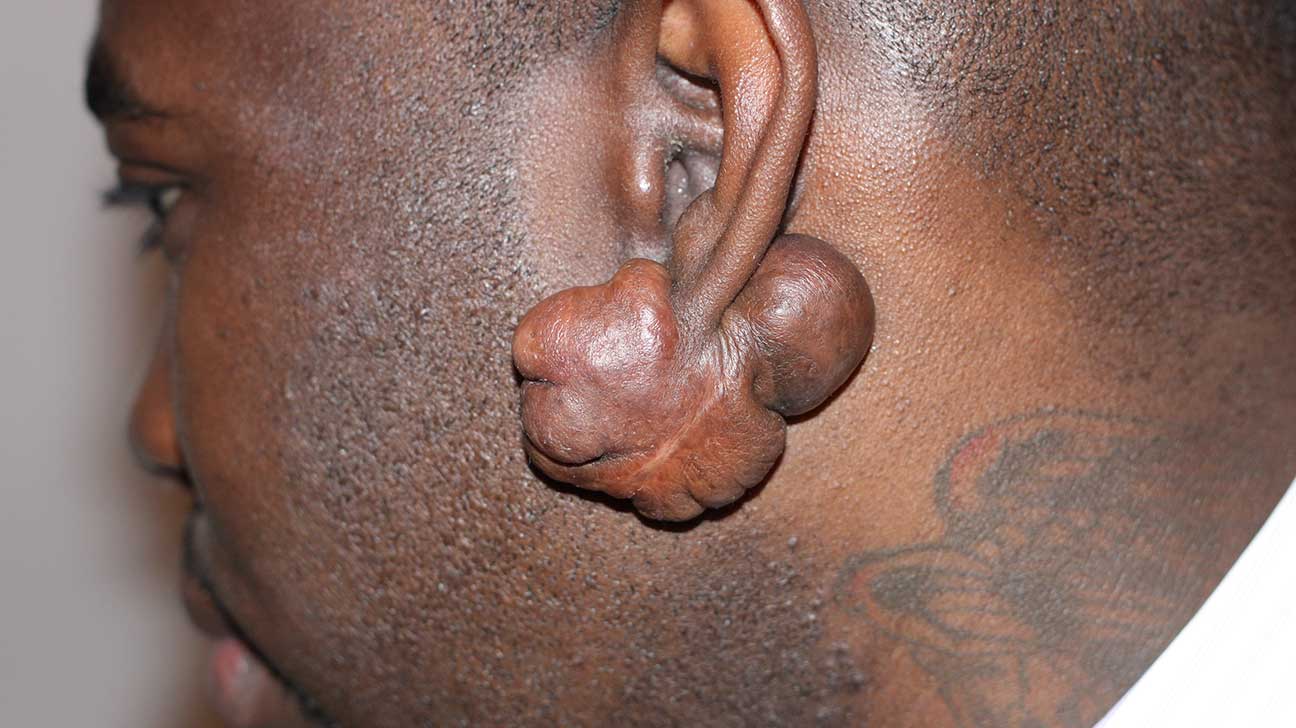
If you’re thinking about getting your first piercing or have had problems with one in the past, it’s important to stay educated. This article will discuss important information about piercings and keloids that you should be aware of.
Sebaceous cysts
It doesn’t matter if you have had a piercing, or if you are thinking about getting one, it is important to understand what can cause these cysts and bumps. The following is a list of possible causes and their effects.
Cysts are most commonly caused by infection. The body’s immune system responds to the wound by releasing chemicals that lead to inflammation. This is what you see as a bump.
Other causes of cysts include injury, clogging of oil glands and bloodstream infections. The most common cysts are those that occur on the skin. They are generally hard to see and are filled with fluid or pus.
A piercing can also result in the formation of epidermoid cysts. These are small round bumps that are most often found on the face or back. These bumps can be accompanied by a foul odor that must be removed surgically.
Other cysts can occur anywhere on the body. They can remain in the skin for many years and are slow to form.
Although cysts are not usually painful, they can cause discomfort in some people. It may be difficult to insert an earring if your ear is pierced. If you’re experiencing discomfort with your earring, you may want to consider taking a warm compress to the area.
Hypertrophic scarring can also occur from piercings. This is a small bump caused by trauma to the area. To prevent hypertrophic scarring from occurring, you can apply rosehip seed oil to the affected area.
The most common treatment for cysts involves surgical removal. A dermatologist may recommend laser treatment to shrink cysts in some cases. A laser can be used to reduce scarring if the cyst is located in sensitive areas.
The best way to determine whether or not you have cysts is to visit a dermatologist for a professional opinion. They will be able pinpoint the cause of your cysts and recommend a treatment plan. Sometimes, you don’t need to have surgery. The scar will fade over time if the cyst is removed.
Piercing trauma
Having a piercing can cause keloids, bumps or other scars in the area. While it is not known why keloids form, there are some factors that have been shown to increase the risk. Your risk of developing keloids depends on the type and age of your piercings, as well as the type and type of skin that you have.
Keloid scars are created when the body produces too much collagen during the healing process. Keloids usually form around the piercing. They can grow for many years and can be small or big.
Itching, burning, and pain are all symptoms of keloids. If the bump or the area around a piercing becomes reddish, inflamed, or painful, it is a good idea to consult a dermatologist. It is important to note that these symptoms can be caused by other health issues, and that they can be treated at home.
Keloids occur in people with darker skin. They also have a tendency to develop in people with a family history of keloids. It is important to discuss the possibility of developing keloids and your doctor. You may want to avoid cosmetic procedures on your piercings if you have a history of keloids.
Keloids are generally round, firm, and bumpy. They can vary in color from pink to brown. They can also become infected or itch.
Keloids can be formed in a number of different areas of the body, and it is important to see a dermatologist if you suspect you have keloids. Keloids can be found in the earlobe, cartilage, and even the fleshy rim.
Keloids can occur when the piercing area closes in on itself, or when an infection occurs. This is caused by the body’s immune system responding to the wound.
Keloid scars may develop within a few weeks of a piercing. However, they can also develop years after the initial piercing. If the bump or area surrounding the piercing becomes inflamed or painful, consult a dermatologist.
Aftercare swabs
Using Aftercare swabs after piercings is a great way to keep your piercing clean and free of harmful bacteria. However, you do need to be careful to avoid overcleaning your piercing. It can cause irritation and even rejection if you scrub it too often. It can also be cleaned with saline, which is gentle and easy to clean.
To apply saline, you can use a bulb-syringe. Salt water can be used to dissolve any lymph fluids.
To clean your jewelry, you can also use a cotton gauze pad or swab. You should avoid using a cloth towel, as it can snag on the jewelry, causing injury or even rejection.
It is best to avoid cleaning your piercings in the bathtub. This is because bacteria can easily be transmitted. It’s also important to avoid using hot tubs, as they can dry out new piercings. You should also avoid soaps that contain fragrances or colors, as they can cause irritation to the wound.
You should seek medical attention if your piercing remains infected or swollen. Your piercer will recommend the best treatment. You may be able to stop the wound from getting larger by applying a silicone gel sheet daily. You can also buy the gel without a prescription, and you can use it for up to six months.
Warm water can be used to rinse out piercings that aren’t painful. You can also apply a saline solution, which will prevent the growth of bacteria. A piercing salon can also sell a saline solution. You can also make your own homemade saline solution. It is easy to make.
A saline toner spray can be used to remove bumps from your piercings. H2Ocean Sea Salt spray, which is anti-inflammatory, can also be used to reduce inflammation and pain. It also contains a natural enzyme called lysozyme. You can use the spray twice a day, depending on your level of discomfort.
Sea salt soaks
Using sea salt soaks to treat piercings is a great way to prevent infection, flush out debris and keep your wound clean. However, you should be careful not to overdo it. You should only use a small amount of sea salt, and it is best to use non-iodized salt.
Using a sea salt soak is not a cure for keloids, but it can be a useful tool in the healing process. If you have a piercing, you should be careful to clean it two times a day and apply non-scented soaps, such as Naked Soap, or a saline solution, such as H2Ocean. Avoid playing with your piercings as this could lead to infection.
Sea salt has long been revered for its healing properties. It was used by Romans and Ancient Egyptians to treat skin injuries. The water from the sea is full of minerals that promote the healing process, open pores and encourage blood flow. It is also antimicrobial, anti-inflammatory, and anti-bacterial.
Sea salt soaks are a natural exfoliant, which promotes healthy skin cell production. They can also reduce inflammation and fight the growth of acne-causing bacteria. Make sure to clean your wounds and use non-sticky dressings.
Using a sea salt soak will speed up the healing process of open skin. Sea salt water contains minerals that stimulate blood flow and aid in exfoliation. The sulfur in the saltwater is a natural antiseptic, preventing infection. You can also use the saltwater to heal fresh tooth holes.
Sea salt soaks are great for piercings. They soften the skin, flush out any debris, and reduce the risk of infection. To prevent bacterial growth, rinse the piercing. A warm compress can be applied to the affected area.
A sea salt soak is also an excellent way to speed up the recovery of a piercing. You should apply the solution twice a day, and replace it with a warm compress. This is also useful for genital and facial piercings. You can also purchase ready-made solutions.
I’m Gillian. I love piercings and tattoos- there’s something about the way they make your body look that just makes me happy. I started this blog to share my passion for piercings and tattoos with the world and to help people who are thinking of getting their first piercing or tattoo.
I’ve been writing about piercings and tattoos for a while now on piercings-body.com. I love sharing my knowledge with others and helping people make informed decisions about their bodies.
Beginners Guides
Clitoral Hood Piercings
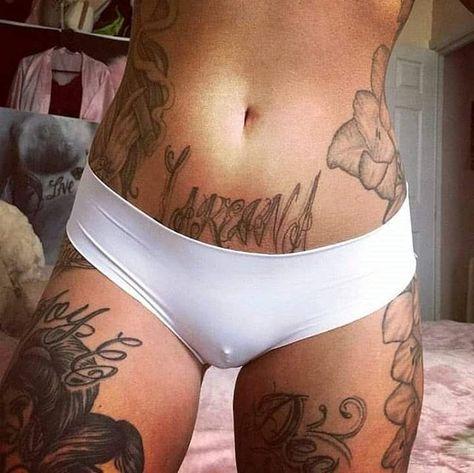
Deciding to get a piercing on your clitoral hood can be an exciting adventure. You have the option to choose between two main styles: horizontal or vertical. No matter which style you choose, the procedure is easy and virtually painless.
Horizontal vs Deep Clitoral Hood Piercings
Getting a genital piercing can be exciting. It can give you a sexier look and help you to claim your sexuality. If done incorrectly, piercings can be painful. It can also increase the risk of getting sexually transmitted diseases. It is important to choose the right piercing for you in order to reduce the risk.
Most genital piercings are done on the clitoris. The clitoris is a small, external portion of the vulva that provides most sexual pleasure. Two ways to puncture the clitoris are possible. It can be pierced through either the prepuce, or through the clitoral cover. Both of these methods are effective and are less painful than other piercings. Getting a piercing through the clitoral hood has also been associated with lower rates of infection.
The clitoris is a sensitive area. Incorrectly piercing the clitoris can cause nerve damage. It can also cause damage to the clitoris. This can lead to chronic nerve damage and diminished sexual function. You should never try to pierce the clitoris yourself. A piercer is the best choice if you want to pierce your clitoris. A piercer is better equipped to make sure that the piercing is done correctly. To ensure that your piercing is done correctly, you might ask a piercer for a qtip test.
A clitoral-hood piercing is the most common genital piercing. A clitoral hood is the skin on the upper part of the vulva that partially covers the external clitoris. Most women have a clitoral hood. Some people have a large outer lips that make it difficult to pierce. This may also interfere with jewelry. Using a ball closure ring is recommended for this type of piercing.
The VCH piercing is another popular type of genital-piercing. This type of piercing also goes by the name vertical clitoralhood piercing. This piercing is similar to the ear piercing, but it is performed in the hood of the clitoris. This type of piercing uses curved barbells or bead rings. This type of piercing can be more sexually stimulating than HCH. The VCH piercing is not like the HCH and will rest on your clitoris and rub against you when you move.
If you want a vertical clitoral hood piercing, make sure you use a good quality piercing jewelry. You should also clean the glans before piercing to prevent infection. A topical skin spray such as Briotech can help to cleanse the glans and allow it to heal. However, it is best not to use alcohol peroxide as it may cause yeast infections. You can also use Cetaphil to clean the area around the piercing.
While a horizontal clitoral hood piercing can be appealing, it is not functional for erotic pleasure. VCH piercings are better suited for women who want to be sexually active or have a large neck. Vertical clitoral hood piercings may also cause pain. They can also be irritating for sexual purposes.
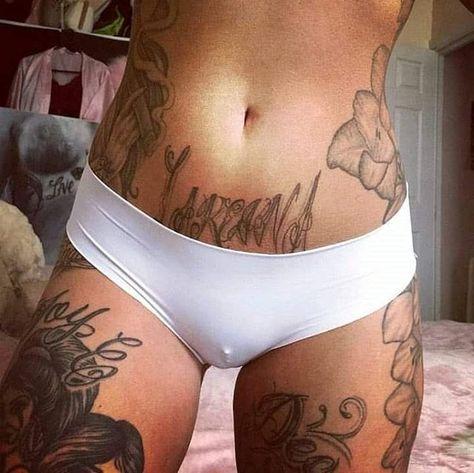
Q-Tip Test for Clitoral Hood Piercings
A clitoral Hood piercing can enhance your sexual experience. You need to ensure that you are getting the right type of piercing. If you want to get a VCH, the Q-tip test can be a great way of ensuring you are getting the right piercing. The cotton tip is used to check for any space under the hood.
Women who want a VCH piercing will typically have a hood large enough to hold the jewelry. If you have a large pubic bump, it can cause the jewelry to become embedded. The hood also needs to be loose enough for the jewelry to be safely pierced through.
The Q-tip test can also be used to determine the depth of your clitoralhood. In this test, you’ll slide the Q-tip under your hood to see if there is space. If there isn’t enough space for the Q-tip, you don’t have a VCH piercing. If there isn’t enough space, you will need to change your jewelry.
The Q-tip test is used to determine the depth of your hood and can also help you get the most out of your piercing. Ask your piercer to test the depth of your hood. This will help you get the right size jewelry. Your piercer might be able to offer advice on choosing jewelry that will enhance your sexual experience.
You can also use the Q-tip test to determine if jewelry cleaning solutions are necessary. You should use a water-based lubricant, like Cetaphil, to help clean your piercing. Also, make sure that you use a cork to keep your needle from piercing the hood. This will reduce the risk of getting a stick and prevent the piercer from damaging the clitoris.
The Q-tip test is also the best way to tell if you’re getting a piercing that is too large for you. A VCH should have a piercing about a third the size of their hood. A piercing for jewelry should be about a quarter of the size of a circle. However, if your hood is too large you might need a smaller one.
While you’re waiting for your piercing to heal, make sure to clean the piercing frequently. After you have had sex, you may want to soak the piercing in a saline solution. You’ll also want to wash your hands before you touch your piercing. This will prevent bacteria from spreading and keep the area clean. You can use a protective layer made of latex for at least six months if you are concerned about the safety and security of your piercings.
Pain Associated with Clitoral Hood Piercings
Although it is an exciting experience, piercing can be painful. You may experience pain, swelling or bleeding depending on the type of piercing. Generally, piercings shrink quickly, so you should take care of the piercing while it’s healing.
While it’s true that piercings will usually shrink in size quickly, it’s important to remember that piercing can be more painful than you expect. This is because the area around the piercing is very sensitive. The piercing could also be in a way that can cause nerve damage. See a medical professional if you experience persistent pain after getting a piercing.
Clitoral hood piercings are the most common type of piercings. This type of piercing goes through the clitoral hood, a thin layer of skin covering the external clitoris. There are two types of clitoral hood piercings. A horizontal clitoral hood piercing is usually located on the side of the hood, while a vertical clitoral hood piercing goes through the clitoral shaft.
A vertical clitoral hood piercing has a fairly simple healing process. The piercing will usually heal in 4 to 8 weeks. It will need to be cleaned daily, as well as be kept from snagging. After the piercing is completed, you may use a topical spray such as Briotech. This helps speed up the healing process and prevent infection. For a few days, you may want to wear a panty liner. To give yourself more stimulation, you can wear jewelry. There are a variety of body piercing jewelry available for clitoral hood piercings, including barbells, captive bead rings, and navel piercing beads.
There are many options for clitoral hood (VCH) piercings, but the most popular is vertical clitoral hood piercing. This is similar to a lung piercing but is more sensitive. When you are having a VCH piercing done, it is important to choose a reputable piercer. This type of piercing could cause nerve damage around your clit so make sure you choose the right piercer.
Clit piercings can be a great way to stimulate your sex life. They are handy for those who are anorgasmic. They are also beneficial for women with a small clitoris and for those who want to improve their anorgasmia symptoms. You can also add jewelry to your clitoral stimulation piercing to increase your sexual pleasure. However, it’s important to remember that clit piercings aren’t going to give you the same level of stimulation that an ear piercing can.
Generally, most women get pierced for aesthetic reasons. However, some people also get pierced for more practical reasons. For instance, they want a piercing that can increase the level of sexual stimulation they experience during sex. Clit piercings can add a little extra stimulation, but they’re not going to provide the same level of stimulation that an ear or navel piercing can.
I’m Gillian. I love piercings and tattoos- there’s something about the way they make your body look that just makes me happy. I started this blog to share my passion for piercings and tattoos with the world and to help people who are thinking of getting their first piercing or tattoo.
I’ve been writing about piercings and tattoos for a while now on piercings-body.com. I love sharing my knowledge with others and helping people make informed decisions about their bodies.
Beginners Guides
Bioflex Nose Ring
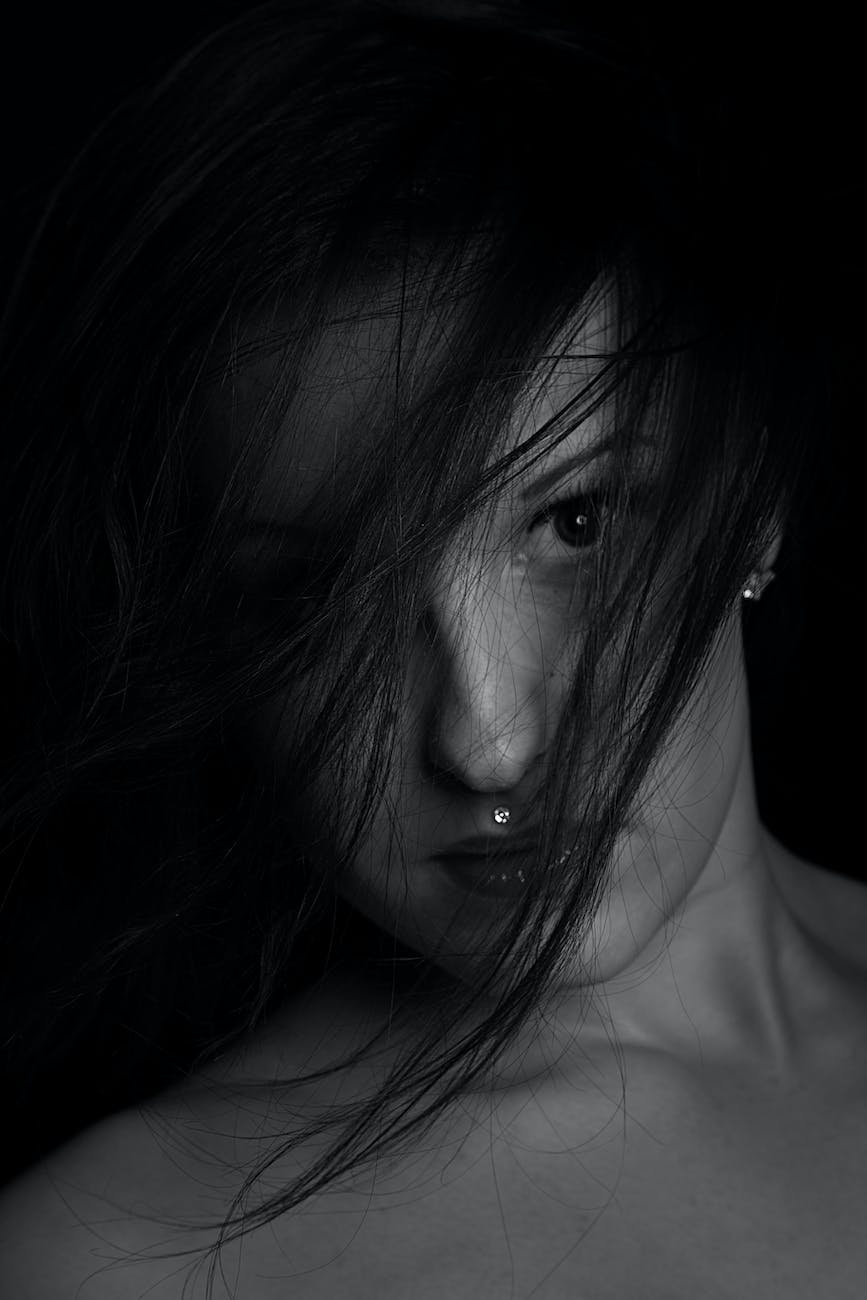
If you’re searching for the ideal ring for special occasions or to add some extra sparkle to your daily style, there are plenty of choices to consider. Opting for a bioflex nose ring provides a durable and lightweight option that ensures comfort without causing any discomfort or harm to your face.
Open nose rings
Using Bioflex Open Nose Rings is a great alternative to more conventional nose jewellery. It is easier to fit and soften. It is also biocompatible, making it suitable for piercings. Bioflex can also be steam sterilized so there are no unpleasant surprises.
The Bioflex Open Nose ring hoop has an angled end to hold it in place. The ring is also accompanied by a small disc which sits on the inside of the nostril. The disc is supposedly the most important part of the ring, as it serves to highlight the fact that it is an open nose ring. The disc has a gap of 4mm, which allows for a secure fit.
The ring is available in Blackline, Zircon Gold, and Titanium. The Bioflex Open-Nose Ring comes in two lengths. This makes it perfect for people who need to change their nose jewellery frequently. The ring is also available in the 316L surgical stainless steel version. It is an ideal choice for those who want a change without the hassle of having to take out their piercing. This ring is also available in a septum flip style. This style is similar in that it features a spiral-type curve halfway up the stud.
The Bioflex Open Nose Roop is available in the most popular nose piercing sizes, and in the most popular metals. It can be cut to any length, making it the perfect piercing solution. The Bioflex Open Nose Ring can be steam sterilized for a clean piercing experience. The Bioflex Open Nose Ring carries a one year warranty, so you can be confident that your nose jewellery will be safe to wear.
Common uses
Bioflex nose rings are a great way of concealing a nose piercing. These plastic studs can be easily put on and are non-reactive. They are hypoallergenic and available in a variety of sizes and shapes to meet your needs. They can also speed up the healing process if your piercing has been infected.
Bioflex nose studs are also good for new nose piercers as they help to maintain the integrity of a piercing. This is especially true for bridge piercings. Migration is more common for piercings on this area of the face. This happens when the hole starts to move as it heals, which can cause bumps. Protecting your piercing against migration is possible with bioflex nose rings.
Bioflex nose studs are perfect for piercings that are taking a long time to heal. These studs are also great for nose piercings that have been infected because they will help you to hide the piercing and get it healed quickly. Bioflex nose studs can be easily cut to the length you prefer.
Bioflex nose rings come in two styles: pin up or push fit. The pin up design is great for nose piercings that are located on the bridge of the nose and the push fit design is great for nose piercings on the sides of the nose. Bioflex nose rings are also made from durable, clear, flexible materials. They are also resistant to different temperatures and are highly non-reactive. They look great on the nose.
Bioflex nose rings can also be used as retainers for piercings. These retainers can conceal your piercing and keep it clean. The backing is a flat, transparent plastic that is easy-to-apply and to remove. Bioflex nose rings are hypoallergenic and highly resistant to infection. They are lightweight and won’t get too hot outside. They are perfect for new nose piercers and they will hide your piercing perfectly. They are also available in a variety of sizes and shapes so that you can find the right stud for your nose.
I’m Gillian. I love piercings and tattoos- there’s something about the way they make your body look that just makes me happy. I started this blog to share my passion for piercings and tattoos with the world and to help people who are thinking of getting their first piercing or tattoo.
I’ve been writing about piercings and tattoos for a while now on piercings-body.com. I love sharing my knowledge with others and helping people make informed decisions about their bodies.
Beginners Guides
Super Long Flexible Bioplast Belly Ring With Dangling jeweled Baby
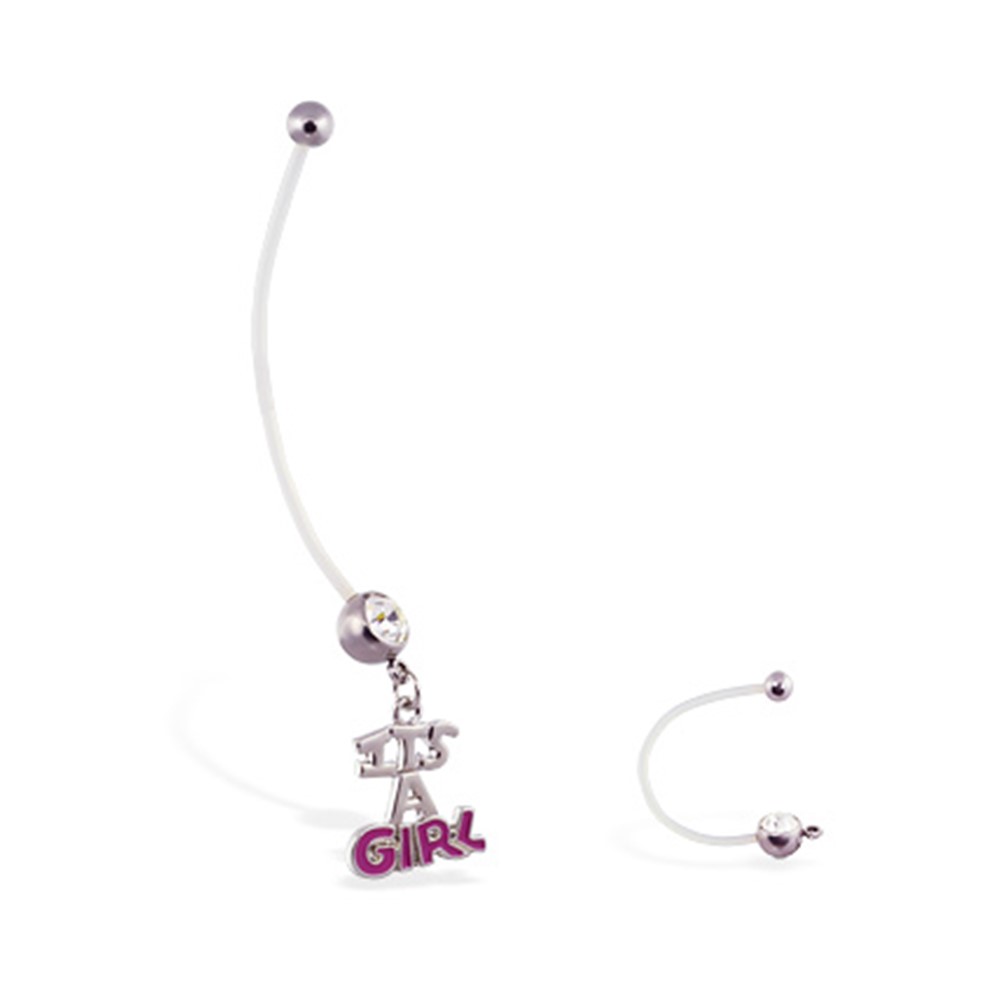
You have a variety of choices available to you, whether you are searching for a flexible bioplast belly band adorned with sparkling pendants or a distinctive belly button ring. You may want to consider choosing a belly ring designed specifically for expectant mothers. This type of belly ring can help keep your piercings secure as your body undergoes changes during pregnancy. Additionally, it can help prevent accidental bumps to your navel area during this time.
PTFE / Flex belly rings can be used to keep piercings during pregnancy
Flex belly rings – PTFE / Flex are a great way for you to keep your piercings in place during pregnancy. They are made of flexible polytetrafluoroethylene (PTFE). This material is safe and non-toxic. It is also nickel free, hospital grade, and flexible.
When you’re pregnant, your skin is much more sensitive. This can lead to dryness around piercings. This can also increase your risk of infection. To protect your skin, keep it moisturized. And don’t forget to clean it often with soap and water. It’s also a good idea to wear loose fitting clothes. Keep your belly button piercing clean.
You might want to consider having your belly button pierced during pregnancy if you have just had it done. This is because your womb grows rapidly, and you’ll want to avoid any injury to the skin. You can also replace your belly ring with fishing line or another flexible material.
Another option is to get a specialized flexible belly button ring. These ring can expand as your womb gets bigger. This will prevent your skin stretching. They come in a variety of colors. You can even get one with a pendant which can hold up to eight characters of your child’s name.
Ask your piercer if you are unsure if your piercing can be kept during pregnancy. You may want to consider removing your belly ring until after delivery, when your body is fully healed. Or you may want to keep your belly ring, but have your piercer cut it down to a size that fits your current belly.
Retainers made of Tygon and PTFE should be considered for your belly ring. These are very flexible and can be cut to fit your belly piercing.

PTFE / Flex belly rings are a pliable, bendable alternative to surgical steel navel rings
PTFE/Flex belly rings are a great alternative to surgical steel navel rings. They are flexible and soft, making them ideal for people with sensitive skin or allergies to metals. They make great belly rings and are perfect for pregnant women.
One of the best parts about these rings is that they are super adjustable. They are also hypoallergic, meaning they don’t have any metallic reaction to the skin. It is important to choose a ring with enough length to accommodate swelling.
PTFE / Flex belly rings are also an excellent choice for active sports. They are flexible and can move with your body for comfort. They are ideal for sports and can be worn for abdominal exercises.
There are several different types of PTFE / Flex belly rings. Some are made of a synthetic material while others are made with a biodegradable material. Others are made out of a variety different plastics. They are all safe to wear and can heal quickly.
PTFE / Flex belly ring can be used with a threading tool, and can be cut to fit the shape of your belly. This makes it a great material for navel piercings in pregnancy.
Another great advantage of PTFE / Flex belly rings is that they are designed to heal quickly. This is especially true for women who are pregnant. They can be used as a navel ring retainer during abdominal exercises. They can also be used to pierce the belly button.
PTFE / Flex belly button rings are available in many different colors and styles. They come in different grades so it is important to choose the right material.
PTFE / Flex belly rings have dermal jewelry
PTFE/Flex belly rings are a great way to keep your navel piercings in place while you are pregnant. A PTFE/Flex belly ring can reduce scarring and speed up the healing process. These belly rings are self threading so you can easily adjust the length to fit your growing belly.
PTFE/Flex belly rings are an excellent alternative to metal rings. These belly rings are made from a polytetrafluoroethylene material (PTFE) and are durable and flexible. They look great in the sun. These belly rings are available in many sizes and shapes. They can also be cut to the perfect length.
The best thing about PTFE / Flex belly rings is that they can be autoclaved to sterilize them. This makes them ideal for people who have sensitive skin. They are also durable, reusable and non-allergenic. These belly rings can also be re-pierced after delivery. They are also hypo-allergenic and the PTFE material is non-irritating. They are ideal for active sports and are a great piercing material. They are also the most secure of all piercing materials.
The best thing about PTFE is that it is a bio-compatible material. This means that your piercing will heal faster and you will likely not experience any allergic reactions. The non-stick surface of PTFE ensures that your piercing stays clean and free from bacteria. People with oral piercings will love PTFE. In addition, it can help prevent gum damage. PTFE also helps reduce the amount of lymph that builds up around the piercing.
The PTFE / Flex belly ring is the best choice for a new or existing piercing. It is flexible, durable, hypo-allergenic, and PTFE/Flex belly rings are ideal for active sports.
PTFE / Flex belly rings are a pliable, malleable alternative to surgical steel navel rings
PTFE / Flex belly rings are a malleable, flexible alternative to surgical steel navel rings. They are hypoallergic so they won’t react to your skin. They are made from polytetrafluoroethylene, also known as Teflon, which is a biologically inert material. They are often used in cosmetic reconstruction.
PTFE belly rings can also be easily cut to your desired shape. They are especially effective for tongue piercings.
There are many different types of PTFE / Flex belly rings. Some are made from Bioflex, a metal-free, biologically inert material. These belly rings can be used for almost any type of piercing. They can also reduce inflammation and healing time. They are also less abrasive that metal discs.
Pregnant women love Bioflex belly buttons rings. You can purchase them at your local piercing shop or online. These belly rings are also available in a variety of different shapes and sizes. They are a great choice for women who like to play sports.
Bioflex is also an ideal choice for people who are allergic to nickel. Many body jewelry that are cheap contain high levels of nickel. They should be tested to ensure they are safe to wear.
PTFE / Flex belly rings are also available in different designs. You can find unique belly buttons rings with quirky charms or dangling jewelry. There are also glow-in-the dark options.
Plastic rings are also a great option for people who are not allergic to metal. They are hypoallergic and can be a great option for stretched piercings. They can be adjusted to any length and won’t tarnish. They are also a great choice for swimming.
PTFE / Flex belly rings are a malleable alternative to surgical steel navel rings
PTFE / Flex belly rings are a malleable alternative to surgical steel navel rings. PTFE stands for polytetrafluoroethylene, also known as Teflon. It is a biocompatible, nonallergenic material that is often used in cosmetic reconstruction. It’s also the material of choice for navel piercings during pregnancy.
PTFE belly rings have many advantages, including a smooth and snag-free finish. They are also easy-to-clean. They can be cut to any shape and are flexible. They look great when worn in the sunlight. They are particularly effective for tongue piercings.
PTFE / Flex belly rings are the right thing for the right person at the right time. For example, a pregnant woman will want a ring that’s hypoallergenic. There are many options online. Some are even adjustable. You should shop at a reputable store for body jewelry to get the best results. If you’re on a tight budget, look for a bargain.
The best thing about the PTFE / Flex belly rings, is their hypoallergenic nature. They are also free of metal, which is great for those who are allergic to nickel. PTFE is flexible and easy to thread. Many PTFE rings come with an adjustable ring that can be adjusted to accommodate changing sizes throughout your pregnancy.
When you’re looking for the best PTFE / Flex belly rings, look for reputable companies that use the highest quality materials. They’re also the best place to compare prices. If you are looking for a low-cost navel ring, PTFE/Flex belly rings are a great option. Whether you’re looking for a simple belly button ring, or something more elaborate, you’ll find the perfect ring at a price that won’t break the bank.
I’m Gillian. I love piercings and tattoos- there’s something about the way they make your body look that just makes me happy. I started this blog to share my passion for piercings and tattoos with the world and to help people who are thinking of getting their first piercing or tattoo.
I’ve been writing about piercings and tattoos for a while now on piercings-body.com. I love sharing my knowledge with others and helping people make informed decisions about their bodies.
-
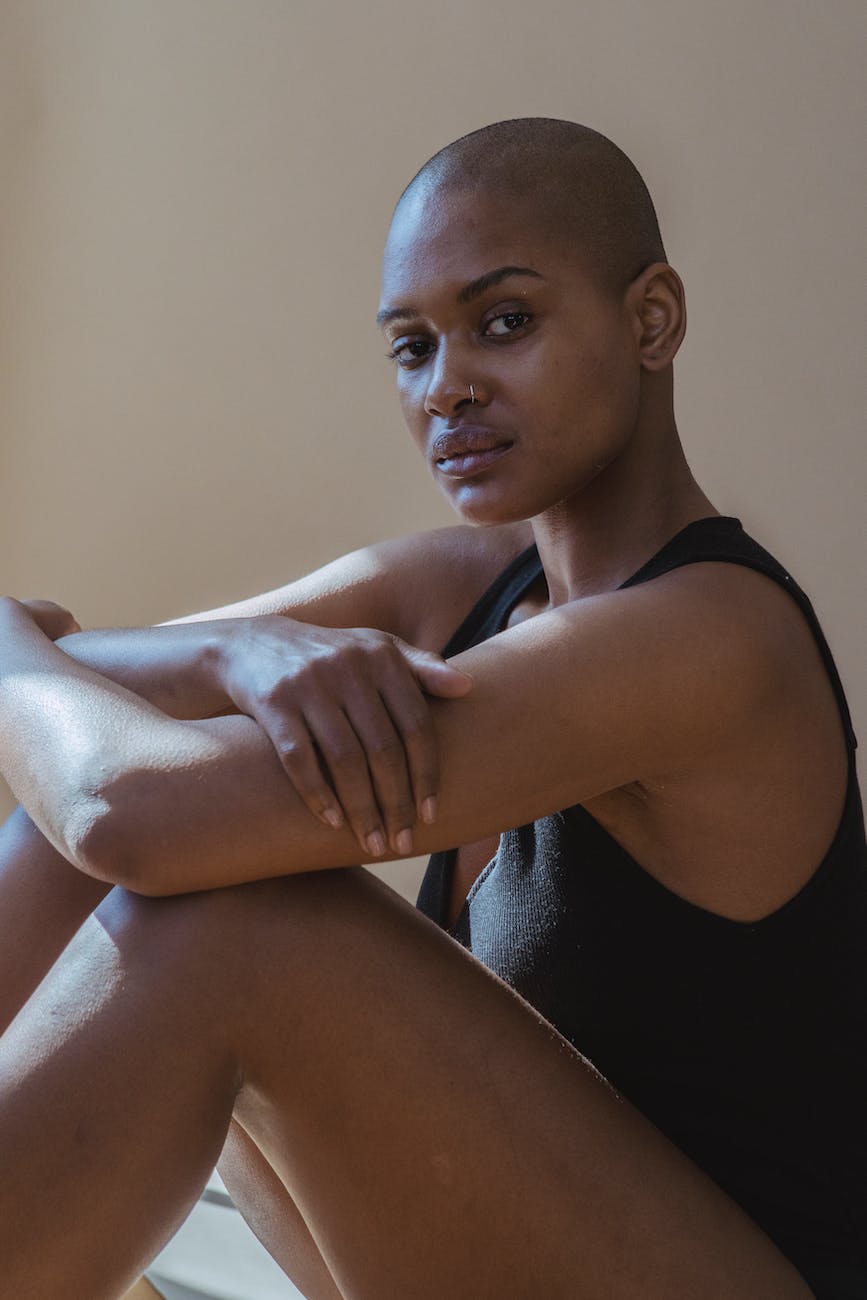
 Beginners Guides1 week ago
Beginners Guides1 week agoCan Body Piercings Cause Cancer?
-

 Beginners Guides1 week ago
Beginners Guides1 week agoHow to Clean Piercings
-

 Beginners Guides1 week ago
Beginners Guides1 week agoHow to Prevent Infection After Piercings Bruise
-

 Beginners Guides1 week ago
Beginners Guides1 week agoAre Ear Piercings Allowed in the Military?
-
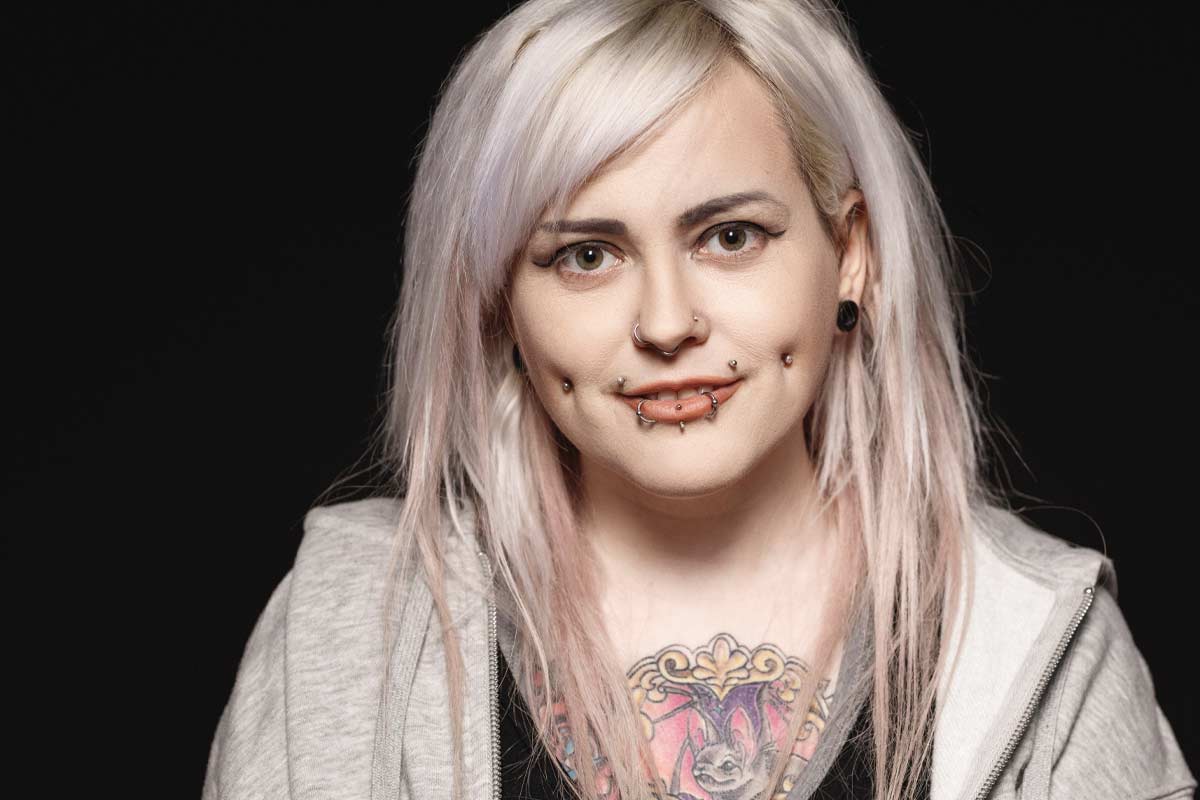
 Beginners Guides3 days ago
Beginners Guides3 days agoWhat Would I Look Like With Cheek Piercings?
-
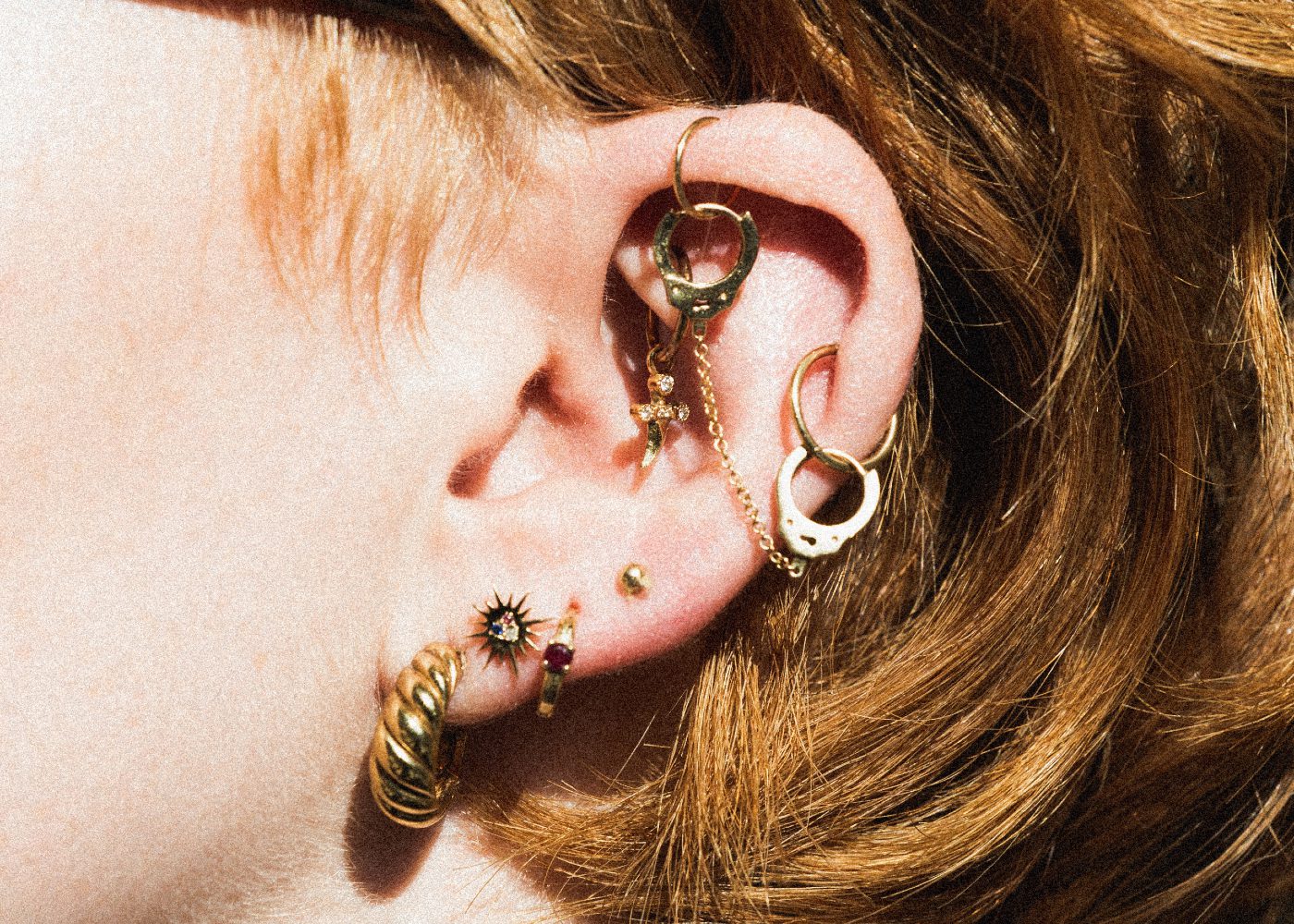
 Beginners Guides3 days ago
Beginners Guides3 days agoWhich Piercings Get Infected the Most?
-

 Beginners Guides3 days ago
Beginners Guides3 days agoClitoral Hood Piercings
-

 Beginners Guides1 week ago
Beginners Guides1 week agoTypes of Body Piercings




